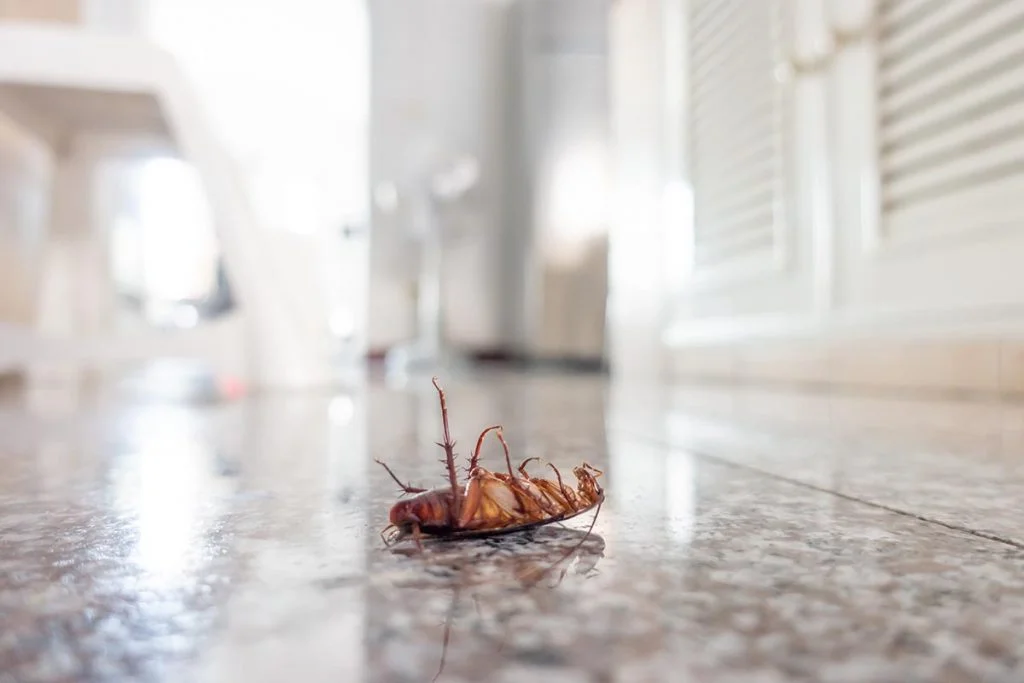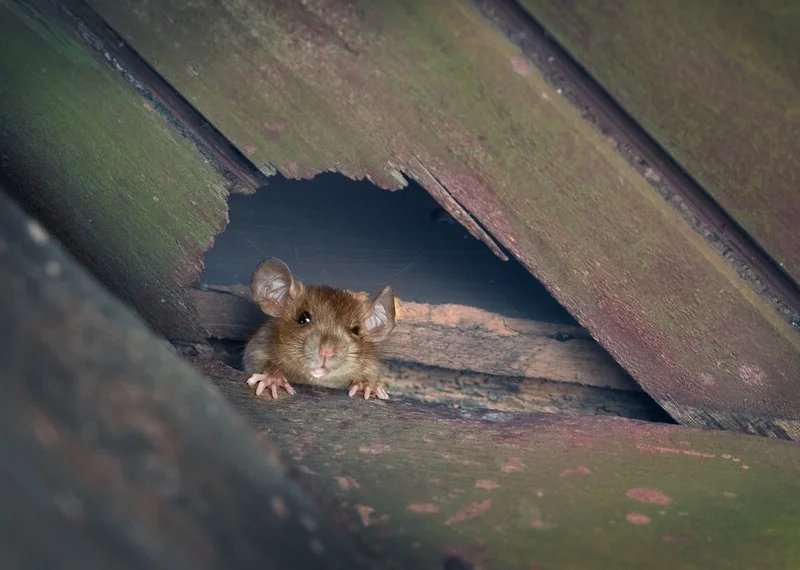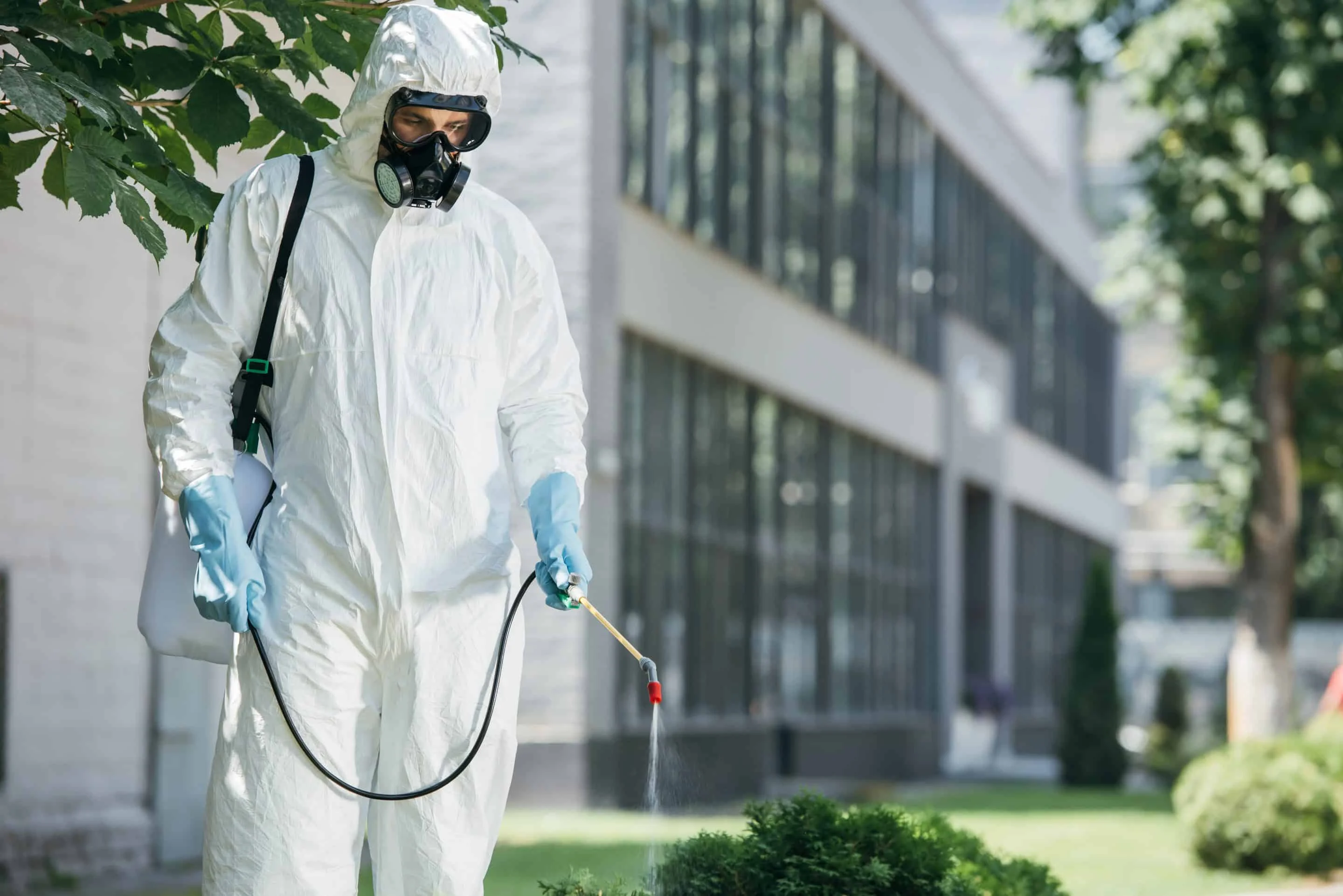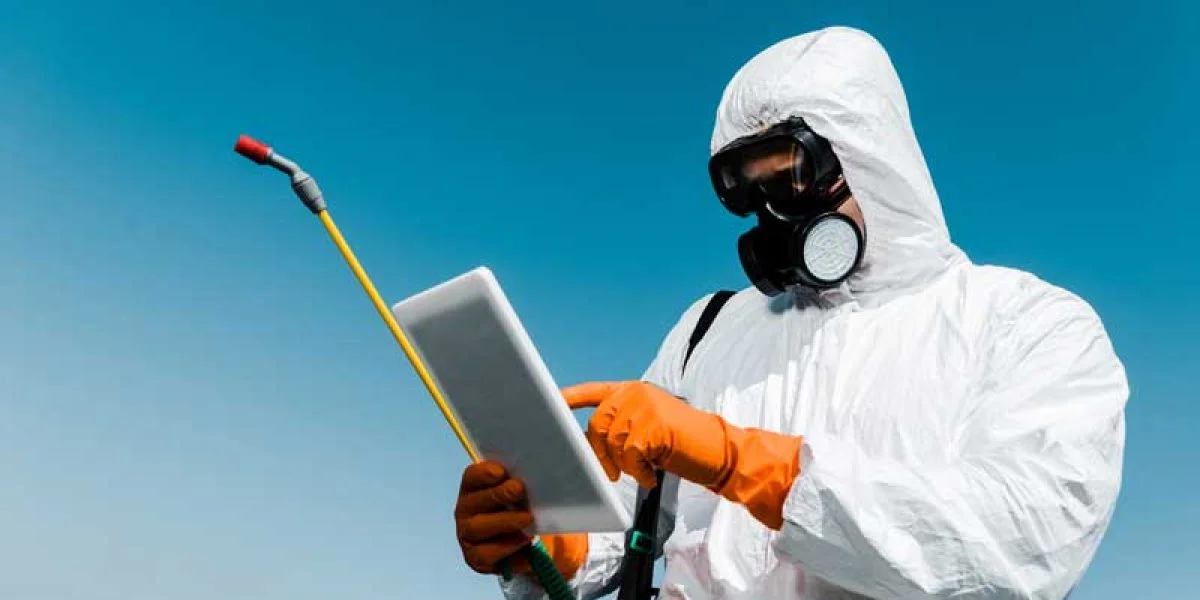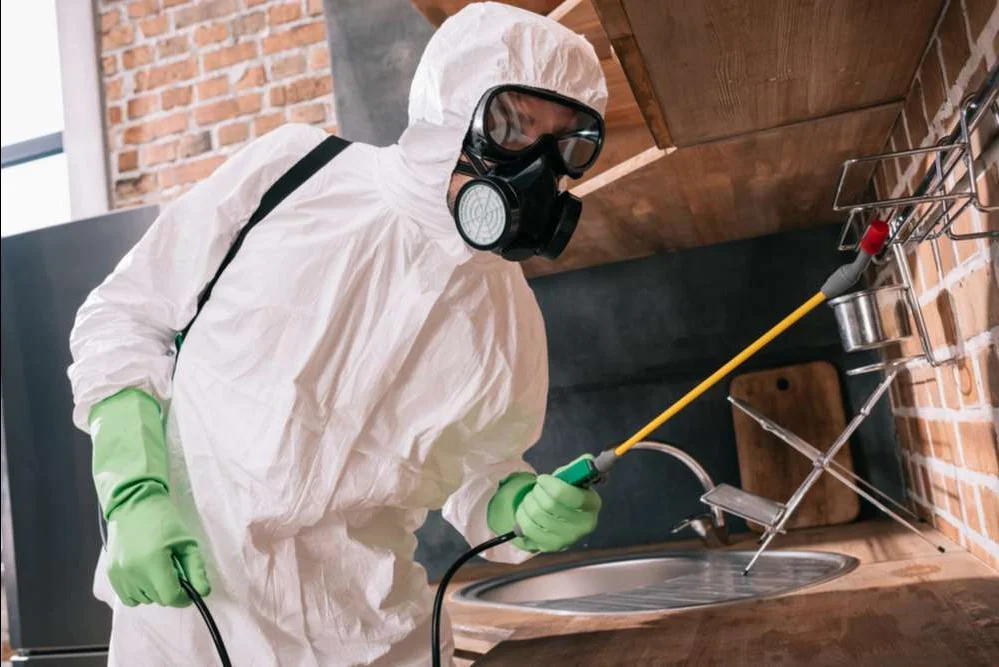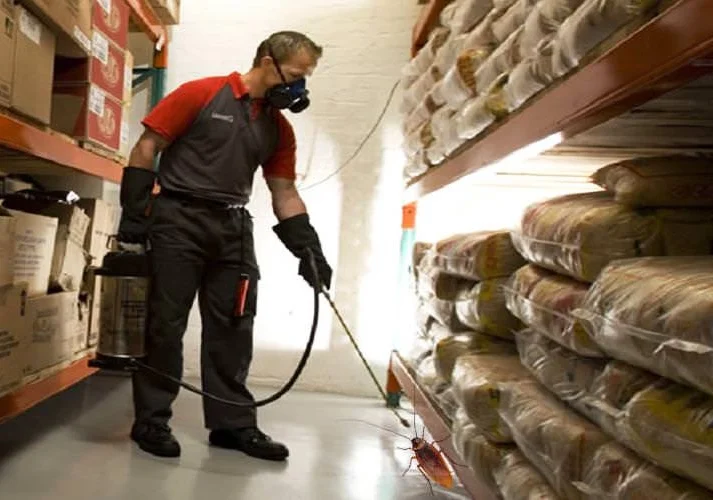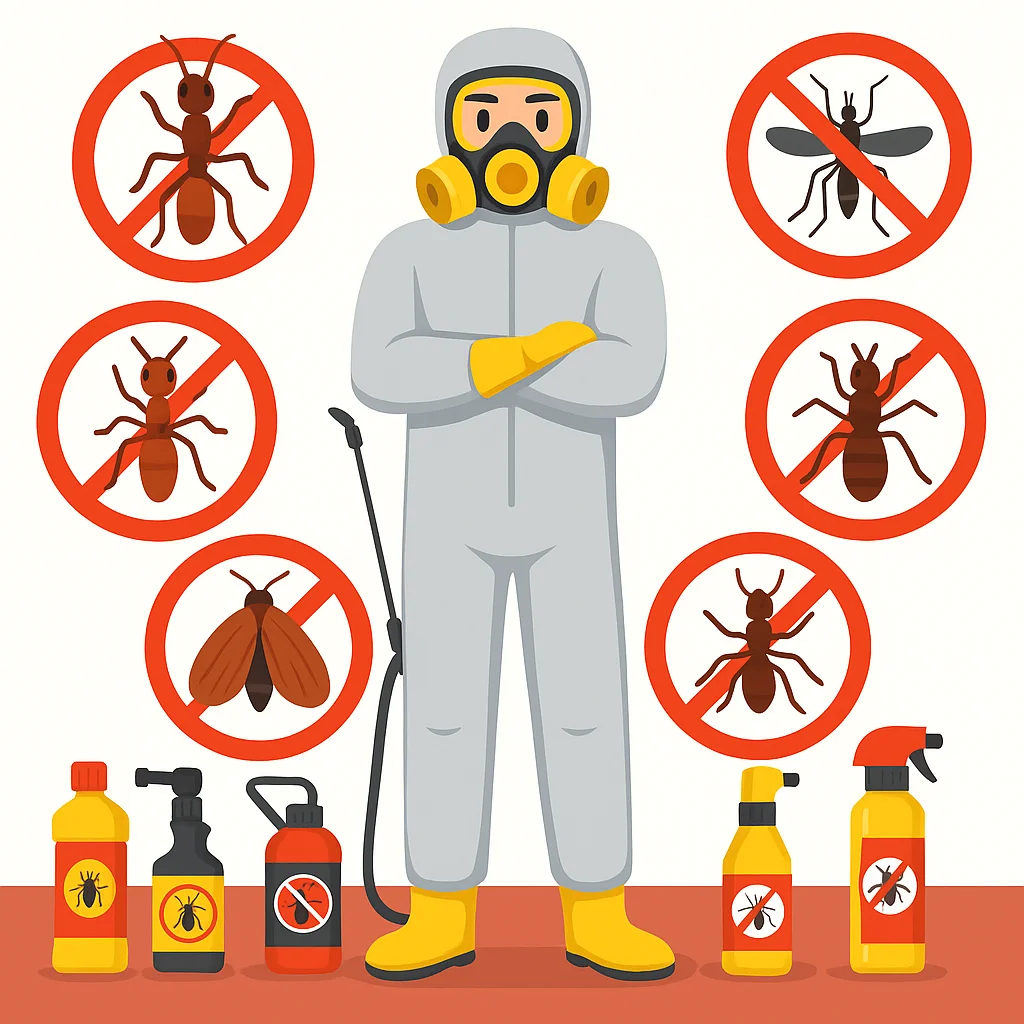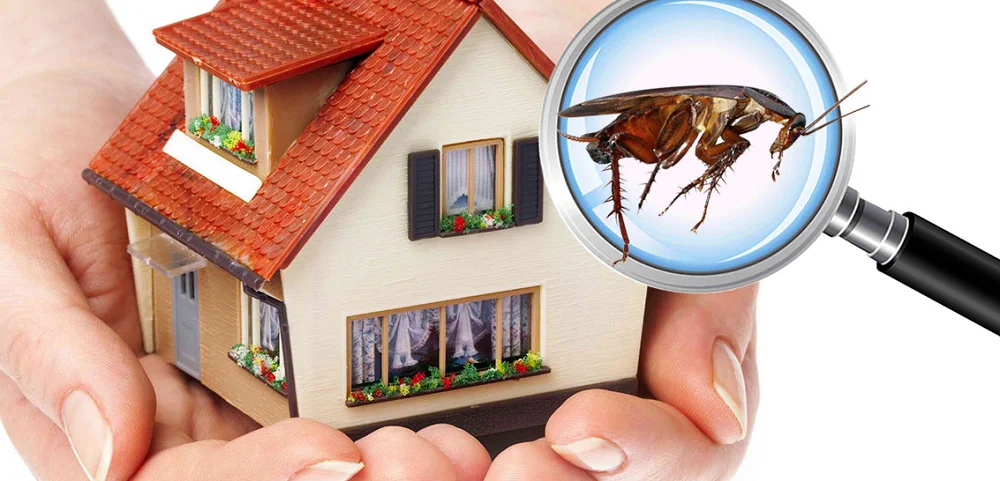Downtown districts present unique pest control challenges that differ significantly
from suburban and rural areas. The concentration of restaurants, office buildings,
retail spaces, and high-rise apartments creates a complex urban ecosystem where pests
can thrive and spread rapidly between interconnected structures. From cockroaches
scurrying through restaurant kitchens to rodents navigating building corridors,
downtown pest control requires specialized knowledge and rapid response capabilities.
Urban environments offer pests abundant food sources, shelter, and transportation
networks through shared walls, utility corridors, and underground passages.
That's why commercial pest control in downtown areas demands a proactive,
integrated approach that addresses both immediate infestations and long-term prevention.
In this comprehensive guide, we'll explore the specific pest challenges facing downtown
districts and how professional exterminators tackle urban pest problems with
eco-friendly pest solutions tailored for high-density environments.
Dealing with pests in your downtown building? Our urban specialists provide
emergency pest control
24/7 and comprehensive
commercial pest management to keep your business running smoothly.
Get immediate assistance now!
Unique Pest Control Challenges in Downtown Districts
Downtown environments create a perfect storm for pest activity due to their
dense, interconnected nature. Here's why urban pest control presents
distinct challenges:
-
High building density Pests can easily move between adjacent buildings
through shared walls, utility lines, and rooftop connections. A cockroach
problem in one restaurant can quickly spread to neighboring businesses through
common areas and infrastructure.
-
Abundant food sources Restaurants, food courts, convenience stores, and
office break rooms provide constant access to food waste and spills. Dumpsters
and garbage collection areas create concentrated feeding grounds that attract
large populations of urban pests.
-
Complex building systems Modern downtown buildings feature extensive
HVAC systems, elevator shafts, and utility corridors that create hidden highways
for pest movement. These areas are often difficult to access for treatment and
monitoring.
-
Continuous human activity The 24/7 nature of downtown districts means
constant foot traffic, deliveries, and waste generation. This activity provides
pests with regular opportunities to enter buildings and establish colonies.
-
Regulatory compliance Downtown businesses must maintain strict health
codes and sanitation standards. Pest problems can result in failed inspections,
temporary closures, and significant financial losses, making rapid response
essential.
These factors make proactive pest prevention and regular monitoring
critical for downtown properties. Professional pest control services understand
these urban dynamics and develop comprehensive strategies that address the
entire building ecosystem, not just individual units.
Common Pests in Downtown Districts
Urban environments support specific pest populations that have adapted to
city life. Understanding these common downtown pests is crucial for effective
control and prevention strategies:
Cockroaches
Commercial kitchen showing signs of cockroach activity
German cockroaches are the most problematic urban pest, thriving in the warm,
humid conditions found in restaurant kitchens, break rooms, and food service
areas. These hardy insects reproduce rapidly and can quickly establish large
colonies in commercial buildings. American cockroaches, often called "water bugs,"
are common in basements, utility areas, and older downtown buildings with
aging plumbing systems.
Professional cockroach removal in downtown settings requires targeted
baiting systems, crack-and-crevice treatments, and ongoing monitoring to
prevent reinfestations. The interconnected nature of downtown buildings
means that successful cockroach control often requires treating multiple
units or floors simultaneously.
Rodents
Technician inspecting areas where rodents commonly nest in urban buildings
Norway rats and house mice are persistent problems in downtown districts,
using utility corridors, elevator shafts, and building foundations as
highways between floors and buildings. These intelligent pests are attracted
to food storage areas, garbage collection points, and anywhere they can
find consistent food and water sources.
Urban rodent control strategies must address both individual buildings
and the broader area ecosystem. This includes securing entry points,
eliminating food sources, and establishing monitoring stations throughout
multi-story buildings to detect activity early.
Flies and Flying Insects
Fruit flies, drain flies, and house flies are constant concerns in downtown
food service establishments. These pests breed in organic matter found in
drains, dumpsters, and food preparation areas. Fruit flies can appear seemingly
overnight when attracted to fermenting organic matter, while drain flies
indicate moisture and sanitation issues in plumbing systems.
Controlling flying insects requires addressing breeding sites, improving
sanitation practices, and implementing exclusion methods like air curtains
and proper door sealing. Regular drain cleaning and waste management are
essential components of any comprehensive urban pest management program.
Stored Product Pests
Downtown food establishments, convenience stores, and office pantries are
vulnerable to stored product pests like Indian meal moths, cigarette beetles,
and pantry beetles. These pests infest dry goods, creating contamination
issues and financial losses for businesses.
Effective management requires proper storage practices, regular inspections
of incoming shipments, and integrated pest management approaches that combine
monitoring, sanitation, and targeted treatments when necessary.
Bed Bugs
High-rise residential buildings, hotels, and even office buildings in downtown
areas can experience bed bug infestations. These pests spread through luggage,
furniture, and personal belongings, making them particularly problematic in
areas with high population density and frequent visitor turnover.
Bed bug control in urban environments requires specialized heat treatments,
targeted insecticide applications, and comprehensive monitoring programs to
prevent spread between units and floors.
Commercial Pest Control Solutions
Commercial pest control service in downtown districts requires
specialized approaches that minimize business disruption while maximizing
effectiveness. Professional exterminators understand that downtown businesses
cannot afford extended closures or customer-facing pest issues that could
damage their reputation and bottom line.
Modern commercial pest management utilizes Integrated Pest Management (IPM)
principles that emphasize prevention, monitoring, and targeted treatments.
This approach reduces reliance on pesticides while maintaining effective
control, which is especially important in food service environments and
buildings with sensitive occupants.
Restaurant and Food Service
Restaurants face unique challenges due to constant food preparation,
high moisture levels, and heavy foot traffic. Professional pest control
for food service establishments includes regular inspections, drain
treatments, exterior perimeter protection, and staff training on
sanitation practices that prevent pest attraction.
Restaurant pest inspection programs typically include monthly
or bi-weekly visits, with immediate response capabilities for emergency
situations. Technicians work during off-hours to minimize operational
disruption and ensure compliance with health department regulations.
Office Buildings
Office buildings require discreet pest management that doesn't disrupt
daily business operations. Pest prevention in offices focuses on
entry point exclusion, break room and kitchen area monitoring, and
addressing any moisture issues that could attract pests.
Professional services for office buildings typically include quarterly
inspections, preventive treatments around the building perimeter, and
monitoring stations in key areas. Emergency response is available for
situations that could impact employee comfort or building reputation.
Retail and Shopping Centers
Retail environments face pest pressure from constant deliveries, food courts,
and storage areas filled with merchandise. Pest control strategies must protect
inventory while maintaining a welcoming environment for shoppers. This includes
monitoring for stored product pests, controlling flying insects that could
disturb customers, and preventing rodent damage to merchandise.
High-Rise Residential Pest Management
Downtown residential towers and apartment complexes present unique challenges
for residential pest protection. Pests can easily move between units
through shared walls, plumbing, and ventilation systems, making building-wide
approaches more effective than individual unit treatments.
Successful high-rise pest management requires cooperation between property
management, residents, and pest control professionals. This includes regular
common area treatments, tenant education programs, and rapid response protocols
for reported pest activity.
Common Area Management
Lobbies, laundry rooms, trash collection areas, and parking garages require
regular monitoring and treatment to prevent pest establishment. These areas
often serve as entry points and breeding grounds for urban pests, making
them critical components of any building-wide pest management strategy.
Unit-to-Unit Prevention
Preventing pest movement between units requires sealing entry points around
plumbing, electrical conduits, and shared walls. Professional services include
inspecting and treating utility corridors, installing pest-proof materials
around penetrations, and establishing monitoring stations to detect activity early.
Protect your downtown property with comprehensive pest management solutions.
From commercial pest control service to residential pest protection,
we have the expertise to keep your building pest-free –
contact us today for a customized treatment plan!
24/7 Emergency Pest Response
Downtown businesses cannot afford to wait for pest problems to resolve
themselves. A cockroach sighting during lunch rush or rodent activity
in a retail store can immediately impact customer confidence and business
revenue. That's why emergency pest control services are essential
for downtown districts.
Professional emergency response includes rapid assessment, immediate
treatment to address visible pest activity, and follow-up services to
prevent recurrence. Technicians arrive equipped with the tools and
treatments necessary to handle a wide range of pest emergencies.
-
Rapid response times Emergency technicians can typically respond
within hours of receiving a call, minimizing business disruption and
addressing pest issues before they escalate.
-
Discreet service Emergency treatments are conducted with minimal
disruption to business operations, using targeted applications that
won't require extended closures or customer evacuation.
-
Immediate assessment Technicians quickly identify the pest species,
extent of infestation, and likely sources to develop an effective treatment
strategy on the spot.
-
Follow-up scheduling Emergency visits include scheduling appropriate
follow-up treatments and ongoing monitoring to prevent future emergencies.
Eco-Friendly Pest Control for Urban Environments
Downtown environments with high population density require careful
consideration of pesticide use and environmental impact. Modern
eco-friendly pest solutions offer effective control while
minimizing risks to building occupants, pets, and the urban ecosystem.
Green pest management strategies emphasize prevention, biological
controls, and targeted applications that minimize pesticide use.
These approaches are particularly important in mixed-use buildings
where residential and commercial spaces share ventilation systems
and common areas.
Urban Environmental Responsibility
Our downtown pest control specialists utilize the latest eco-friendly
techniques and green-certified products to protect both your property
and the urban environment while maintaining effective pest control.
| Green Treatment Method |
Urban Applications |
Environmental Benefits |
| Bait Stations |
Targeted rodent and ant control in commercial kitchens, office
break rooms, and common areas.
|
Minimal pesticide exposure; contained application prevents
environmental contamination.
|
| Integrated Pest Management (IPM) |
Comprehensive building-wide programs that emphasize prevention
and monitoring over chemical treatments.
|
Reduces overall pesticide use while maintaining effective
long-term control and building health.
|
| Heat Treatments |
Bed bug elimination in residential units and hotels without
chemical residues.
|
No chemical application; kills all life stages of target pests
using controlled temperature elevation.
|
| Botanical Insecticides |
Plant-based treatments for flying insects and surface pests
in sensitive environments.
|
Derived from natural sources; biodegradable and lower toxicity
to non-target species.
|
| Physical Exclusion |
Sealing entry points, installing door sweeps, and screening
ventilation openings.
|
Permanent pest prevention without any chemical application;
improves building efficiency.
|
Specialized Services by Building Type
Food Service Establishments
Restaurants, cafeterias, and food courts require specialized pest
management that addresses the unique challenges of food preparation
environments. High moisture, organic waste, and constant food availability
create ideal conditions for pest activity that must be carefully managed
to maintain health code compliance.
Professional food service pest control includes regular drain treatments,
grease trap maintenance, exterior dumpster area management, and staff
training on sanitation practices that prevent pest attraction.
Healthcare Facilities
Medical offices, clinics, and healthcare facilities in downtown areas
require pest control services that meet strict health and safety standards.
Treatments must be safe for patients with compromised immune systems while
effectively controlling pests that could pose health risks or contaminate
medical supplies.
Educational Institutions
Downtown schools, universities, and training centers need pest management
programs that protect students and staff while maintaining learning
environments. This includes addressing cafeteria pest issues, preventing
stored product pests in supply areas, and managing outdoor areas where
stinging insects could pose risks.
Financial Institutions
Banks and financial offices require discreet pest control that maintains
professional appearances while protecting sensitive documents and equipment.
Services focus on prevention through exclusion methods and minimal-impact
treatments that don't disrupt business operations.
Advanced Urban Pest Management Technology
Modern downtown pest control utilizes advanced technology to provide
more effective and efficient services. Digital monitoring systems,
GPS tracking, and remote sensors allow pest control professionals
to monitor large buildings continuously and respond to issues before
they become visible problems.
These technological advances are particularly valuable in downtown
environments where early detection can prevent pest problems from
spreading between connected buildings and disrupting multiple businesses.
-
Digital monitoring stations Smart traps and sensors that provide
real-time data on pest activity, allowing for immediate response and
trend analysis to predict future problems.
-
Mobile reporting systems Technicians use tablets and smartphones
to document treatments, capture photos of pest evidence, and provide
immediate reports to building managers.
-
Building information integration Pest control data is integrated
with building management systems to identify patterns and optimize
treatment schedules based on actual pest pressure.
-
Predictive analytics Historical data and environmental factors
are analyzed to predict pest activity seasons and adjust prevention
strategies accordingly.
Regulatory Compliance and Health Codes
Downtown businesses must navigate complex regulatory requirements that
vary by industry and building type. Professional pest control services
understand these regulations and ensure that all treatments and documentation
meet or exceed required standards.
Health Department Requirements
Food service establishments must maintain detailed pest control records,
use only approved treatments in food preparation areas, and demonstrate
ongoing professional pest management. Violations can result in temporary
closures, fines, and damage to business reputation.
Building Code Compliance
Multi-story buildings must meet specific requirements for pest exclusion,
waste management, and sanitation systems. Professional pest control
services help building owners identify and address code violations that
could contribute to pest problems.
Insurance Requirements
Many commercial insurance policies require documented pest control programs
to maintain coverage for pest-related damages. Professional services provide
the documentation and compliance records necessary to meet these requirements.
Preventive Pest Management Strategies
Effective downtown pest management emphasizes prevention over reaction.
By addressing the conditions that attract and support pest populations,
buildings can maintain pest-free environments with minimal ongoing
treatment requirements.
Strategic pest prevention in urban environments requires
understanding how pests move through downtown districts and addressing
both individual building vulnerabilities and area-wide pest pressure.
Structural Modifications
-
Entry point exclusion Sealing cracks, gaps, and penetrations
around utilities, windows, and doors to prevent pest entry.
-
Moisture control Addressing plumbing leaks, improving ventilation,
and eliminating standing water that attracts pests.
-
Sanitation improvements Installing proper waste management
systems, improving cleaning protocols, and addressing food storage
issues.
-
Landscaping modifications Adjusting outdoor areas to reduce
pest harborage and eliminate attractants near building entrances.
Ongoing Monitoring
Regular inspections and monitoring programs allow for early detection
and intervention before pest problems become visible. This includes
scheduled inspections, trap monitoring, and documentation of conditions
that could lead to future pest issues.
Seasonal Pest Management in Downtown Areas
Spring (March-May)
- Increased ant activity as colonies expand
- Flying insect emergence from winter hiding spots
- Rodent breeding season begins
Focus: Exterior perimeter treatments and entry
point inspections as pests become active.
Summer (June-August)
- Peak flying insect activity
- Cockroach populations expand rapidly
- Increased food service pest pressure
Focus: Intensive monitoring and treatment of
food service areas and common pest harborage sites.
Fall (September-November)
- Rodents seek indoor shelter for winter
- Stored product pests in food storage areas
- Overwintering pest preparation
Focus: Exclusion work and elimination of indoor
harborage sites before winter months.
Winter (December-February)
- Indoor pest activity concentrated
- Reduced outdoor pest pressure
- Heating system pest movement
Focus: Interior treatments and monitoring with
preparation for spring pest emergence.
Downtown Success Stories
"Our 20-story office building had persistent cockroach issues until
PestControl100 implemented their comprehensive IPM program. Now we
maintain a pest-free environment with minimal disruption to our tenants."
- Michael R., Building Manager
★★★★★
"As a downtown restaurant owner, pest control is critical to our
success. Their emergency response saved us during a health inspection,
and their ongoing service keeps our kitchen spotless."
- Jennifer L., Restaurant Owner
★★★★★
"Managing pest control across our entire mixed-use development was
challenging until we partnered with PestControl100. Their building-wide
approach solved problems we couldn't address unit by unit."
- David K., Property Developer
★★★★★
Cost-Effective Urban Pest Management
Downtown property owners and business managers need pest control
solutions that deliver results without breaking budgets. Professional
exterminator business models focus on prevention-based
approaches that reduce long-term costs while maintaining effective
pest control throughout urban properties.
Comprehensive pest management programs often cost less than reactive
emergency treatments, business closures, and reputation damage
caused by visible pest problems. Investment in professional services
pays dividends through improved tenant satisfaction, regulatory
compliance, and property values.
Building-Wide Service Benefits
-
Volume pricing advantages Treating entire buildings or multiple
properties provides economies of scale that reduce per-unit costs
compared to individual service calls.
-
Preventive cost savings Regular monitoring and maintenance
prevent expensive emergency treatments and business disruptions that
cost far more than ongoing professional service.
-
Regulatory compliance protection Professional documentation
and treatment records protect against fines, closures, and legal
liability that could result from pest-related violations.
-
Property value preservation Well-maintained, pest-free properties
command higher rents and maintain better tenant retention, improving
overall investment returns.
Urban Wildlife and Nuisance Pest Control
Downtown areas attract various urban wildlife and nuisance pests
that can create problems for buildings and businesses. Pigeons,
bats, and other urban-adapted animals require specialized management
approaches that address both immediate problems and long-term
prevention.
Pest control eaves and rooftop treatments are essential
for preventing bird nesting and roosting that can create health
hazards, building damage, and aesthetic problems for downtown
properties.
Bird Control Solutions
Pigeons and other urban birds create significant problems through
droppings, nesting materials, and aggressive behavior around food
sources. Professional bird control includes exclusion devices,
deterrent systems, and habitat modification that discourages roosting
and nesting without harming the birds.
Bat Management
Bats often roost in downtown buildings, creating noise, odor, and
health concerns for occupants. Professional bat management includes
humane exclusion methods that allow bats to leave while preventing
re-entry, along with cleanup of guano and contaminated materials.
Stinging Insect Control
Wasps, hornets, and bees can establish colonies around downtown
buildings, creating safety risks for pedestrians and building occupants.
Professional management includes safe nest removal, preventive treatments,
and emergency response for situations that pose immediate danger.
Integration with Property Management
Successful downtown pest management requires close coordination
between pest control professionals and property management teams.
Professional pest control service providers work as partners
with building managers to develop comprehensive strategies that
address both immediate pest issues and long-term building health.
This collaborative approach ensures that pest control efforts
align with building operations, tenant needs, and property
improvement plans to create sustainable, pest-free environments.
Communication Protocols
-
Regular reporting systems Detailed reports on pest activity,
treatment results, and recommended improvements help property
managers make informed decisions about building maintenance.
-
Tenant communication Professional services include tenant
education materials and communication protocols that help residents
and businesses understand their role in pest prevention.
-
Emergency response coordination Clear protocols for reporting
and responding to pest emergencies ensure rapid resolution without
confusion or delays.
-
Maintenance integration Pest control recommendations are
integrated with regular building maintenance schedules to address
structural issues that contribute to pest problems.
Staff Training and Pest Prevention Education
Effective downtown pest management extends beyond professional treatments
to include education and training for building staff, tenants, and
business employees. Understanding how daily activities and maintenance
practices affect pest pressure helps create building-wide prevention
strategies that support professional pest control efforts.
Building Staff Training
Maintenance staff, security personnel, and cleaning crews receive training
on identifying early signs of pest activity, proper sanitation practices,
and how to report pest issues effectively. This front-line awareness
enables early intervention that prevents minor issues from becoming
major infestations.
Tenant Education Programs
Residential and commercial tenants learn about their role in building-wide
pest prevention through educational materials, workshops, and regular
communications. Topics include proper food storage, waste management,
and how to prevent pest entry through individual units.
Food Service Training
Restaurant and food service staff receive specialized training on
sanitation practices, pest identification, and immediate response
procedures that maintain health code compliance and prevent pest
establishment in food preparation areas.
Environmental Monitoring and Data Analysis
Modern downtown pest management relies on comprehensive monitoring
and data analysis to understand pest patterns, treatment effectiveness,
and environmental factors that influence pest activity. This
scientific approach enables more precise and effective control
strategies tailored to each building's unique conditions.
Home pest inspection techniques adapted for commercial
environments provide detailed assessments of pest risk factors,
current activity levels, and areas requiring immediate attention
or ongoing monitoring.
Continuous Monitoring Systems
-
Digital trap networks Smart monitoring devices throughout
buildings provide real-time data on pest activity, enabling immediate
response and trend analysis for predictive management.
-
Environmental sensors Monitoring temperature, humidity, and
other conditions that influence pest activity helps predict problems
and optimize treatment timing.
-
Activity mapping GPS-enabled reporting systems create detailed
maps of pest activity patterns that guide targeted treatment strategies
and prevention efforts.
-
Treatment effectiveness tracking Detailed records of treatment
applications and results help optimize strategies and demonstrate
regulatory compliance.
Quality Assurance and Service Standards
Downtown pest control services must meet rigorous quality standards
to address the complex challenges of urban environments. Professional
service providers implement comprehensive quality assurance programs
that ensure consistent, effective results across all downtown properties.
Service Documentation
Detailed documentation of all services, treatments, and recommendations
provides property managers with the information needed to make informed
decisions about building maintenance and pest prevention strategies.
This documentation also supports regulatory compliance and insurance
requirements.
Performance Metrics
Professional services track key performance indicators including response
times, treatment effectiveness, customer satisfaction, and regulatory
compliance to ensure consistent service quality and continuous improvement.
Technician Certification
Downtown pest control technicians maintain specialized certifications
and ongoing training in urban pest management, commercial applications,
and safety protocols to provide expert service in complex downtown
environments.
Frequently Asked Questions
How does downtown pest control differ from suburban pest management?
Downtown pest control faces unique challenges including higher
building density, interconnected structures, constant food sources,
and rapid pest movement between buildings. Urban environments
require specialized approaches that address building-wide ecosystems
rather than individual properties. Professional services must also
work around complex business schedules and regulatory requirements
specific to commercial districts.
What are the most common pests in downtown commercial buildings?
The most prevalent downtown pests include German cockroaches in
food service areas, Norway rats and house mice using building
infrastructure as highways, various fly species attracted to
organic waste, and stored product pests in retail environments.
High-rise residential buildings also commonly deal with bed bugs,
while office buildings typically see occasional ant activity and
moisture-related pests around break rooms and bathrooms.
How quickly can emergency pest control services respond in downtown areas?
Professional emergency pest control services typically respond
within 2-4 hours during business hours and within 4-8 hours for
after-hours emergencies in downtown districts. Response times
may be faster for critical situations like pest sightings during
health inspections or in food service environments. Emergency
services include immediate assessment, rapid treatment of visible
pest activity, and scheduling of appropriate follow-up treatments.
Are eco-friendly pest control methods effective in high-density urban environments?
Yes, modern eco-friendly pest control methods are highly effective
in downtown environments when applied as part of comprehensive
Integrated Pest Management (IPM) programs. These approaches emphasize
prevention, targeted treatments, and biological controls that work
well in urban settings. Bait stations, heat treatments, exclusion
methods, and botanical insecticides provide effective control while
minimizing environmental impact and meeting safety requirements for
high-occupancy buildings.
How do building-wide pest control programs work in mixed-use developments?
Building-wide programs in mixed-use developments coordinate pest
control across residential, commercial, and retail spaces to address
the interconnected nature of urban pest problems. These comprehensive
programs include common area treatments, individual unit monitoring,
and specialized approaches for different space types. Success requires
cooperation between property management, tenants, and pest control
professionals to maintain consistent prevention practices throughout
the entire building ecosystem.
Don't let pests disrupt your downtown business or residential property.
Trust PestControl100 for comprehensive urban pest management
solutions that protect your property and reputation –
contact us today for expert service that works!

